Table of Contents
Introduction
Fruits and vegetables are a staple in any home and packed with vitamins and minerals that help our body stay healthy. But there are some pretty bizarre-looking fruits and vegetables and can be described as alien-like. People who love to try exotic foods will try these one-of-a-kind fruits and vegetables found on their to-eat list. If you are interested in the world’s strangest fruits and vegetables, then we have listed 50 of the strangest fruits and vegetables you’ll feast your eyes upon.
1. Salak (Snake Fruit)

Pronunciation: /’sa-lak’/
Origins: Indonesia
Tastes Like: Honey and Pineapple combined
Where to Buy: Special produce sections in markets or local growers online
Taste Score: 5/5
Salak or Snake Fruit has a strange appearance. Its outsides have small bumps, almost looking like snakeskin, thus the name. The skin has flakes and small bumps and is easy to peel off. It is also a bit prickly, but it is not painful to the touch. The outside of the fruit has a brownish-red color, while the meat has a yellow-orange color. The flesh of the fruit is pale yellow with a crunch like an apple. It is rich in potassium and pectin, which is why it is the ‘fruit of memory’ in Indonesia.
The Salak fruit is packed with nutrients like beta-carotene, dietary fiber, and protein. Also, it is an excellent source of Vitamin C. Studies have shown that Salak aids with your heart health and metabolism when consumed. Be careful, though; this fruit is delicious, but too much consumption will lead to constipation.
2. Kiwano Melon

Pronunciation: /’ki-wa-no me-lon’ /
Origins: Sub-Saharan Africa
Tastes Like: Mildy sweet
Where to Buy: Special produce companies and markets
Taste Score: 3/5
Kiwano melon is also known as the horned melon. This fruit’s skin is yellow with orange stripes and spikes, and inside is small green pulps with seeds inside. It tastes like melon, cucumber, and lime, all mixed.
The Kiwano melon has high levels of iron and other vitamins. It is suitable for your heart health and the boosting of your immune system. It also controls your blood sugar level and is a great way to hydrate your body.
3. Durian

Pronunciation: /ˈdjʊəriən, ˈdʊr-, -æn/
Origins: Southeast Asia and thrives best in Borneo and Sumatra
Tastes Like: Sweet and Custardy
Where to Buy: In local Asian markets and cultural stores
Taste Score: 4/5
In southeast Asia, Durian is dubbed King of Fruits because of its large size, exotic look, and distinct flavor. Outside this fruit are bumpy and spiky features but inside, you’ll find soft, custardy meat that melts in your mouth. Some people say that Durian has an overwhelming and sometimes unpleasant smell. Due to its strong aroma, it’s banned from hotels in Singapore and Thailand. Exotic food lovers have Durian on their bucket list for the challenge of overcoming the smell and experiencing the taste.
Durian is rich in antioxidants and can fight off cancer-promoting organisms. Also, it lowers the body’s cholesterol levels and prevents heart disease. Moreover, it also helps lower blood sugar levels.
4. Noni Fruit

Pronunciation: /’no-ni’ /
Origins: Polynesia
Tastes Like: Bitter
Where to Buy: Special produce companies and markets all across the US
Taste Score: 2/5
The Noni Fruit is a small rounded fruit that has lumps on the skin. Inside, you’ll find a greyish-white flesh with brown-black seeds in the middle. The fruit is also known as “vomit fruit” because of its smell. The foul odor is accompanied by a slightly bitter taste of the flesh, making this fruit not appetizing.
But the noni fruit has been used as medicine and other remedies for centuries. The noni fruit is packed with proxeronine that helps the body absorb vitamins and minerals. Also, the Noni fruit contains natural enzymes that boost your immune system.
5. Banana Passion Fruit

Pronunciation: /’ba-na-na pas-sion fr-uit’/
Origins: Tropical and Subtropical regions of South America
Tastes Like: Sweet, Tarty Banana
Where to Buy: Special produce sections in markets and groceries or expert growers
Taste Score: 4/5
The Banana Passion Fruit plant is a vine that grows up to 7 meters long. This plant is banned in New Zealand because it kills other crops and plants by crawling up at them when it grows. But, the fruit itself is delicious. It resembles a banana but, on the inside, it looks more like passion fruit.
The banana passion fruit beneficial for consumption containing vitamins A and C. Also, it is a good source of fiber. Antioxidants are also present in this fruit. You can even eat the seeds, too.
6. Mangosteen
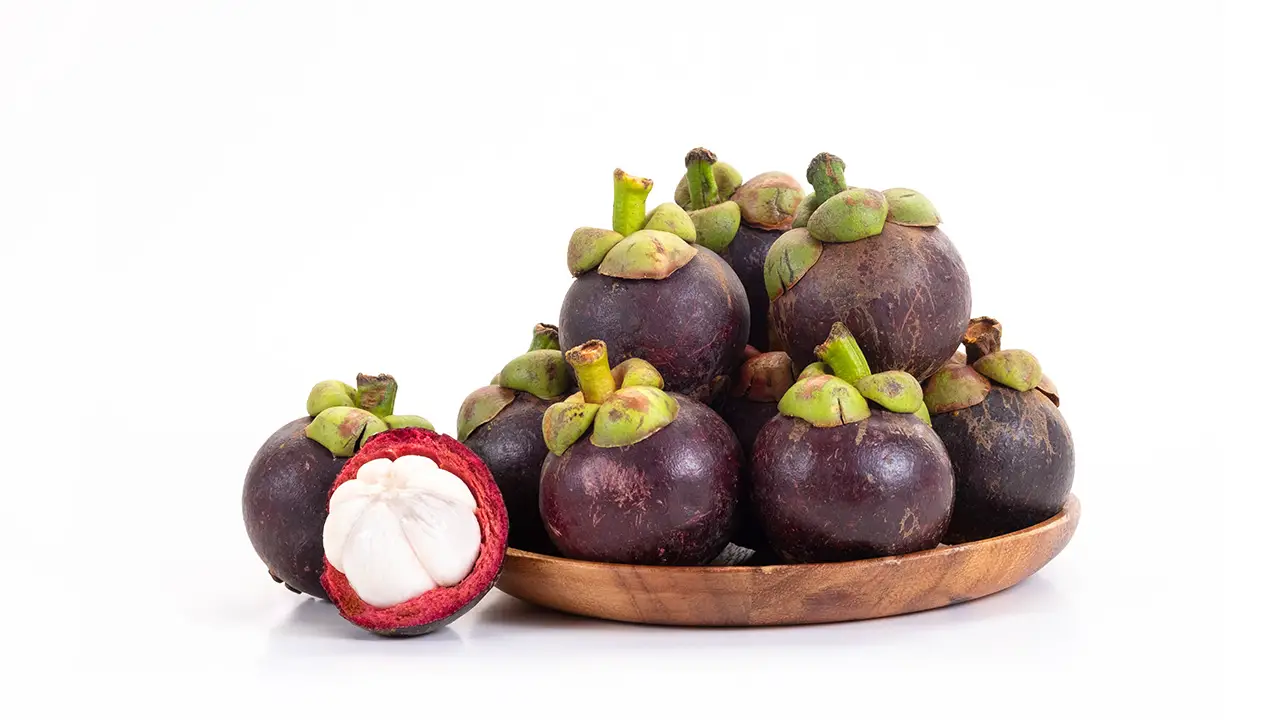
Pronunciation: /man-gos-teen’/
Origins: Southeast Asia
Tastes Like: Sweet, Tarty Banana
Where to Buy: Special produce sections in markets and groceries or expert growers
Taste Score: 4/5
The Mangosteen fruit has purple, almost black skin. When you open the fruit, you’ll find white, fibrous meat. The fruit is soft, and you’ll have to handle it with care. Be careful, or the skin can stain your clothes.
Mangosteen is known to have a lot of benefits. In Southeast Asia, they are used as medicine to treat and prevent illnesses. It’s packed with nutrients with antioxidants, vitamin C, and folate. Its benefits are lowering high blood sugar levels, help with weight loss, and healthier skin.
7. Jackfruit
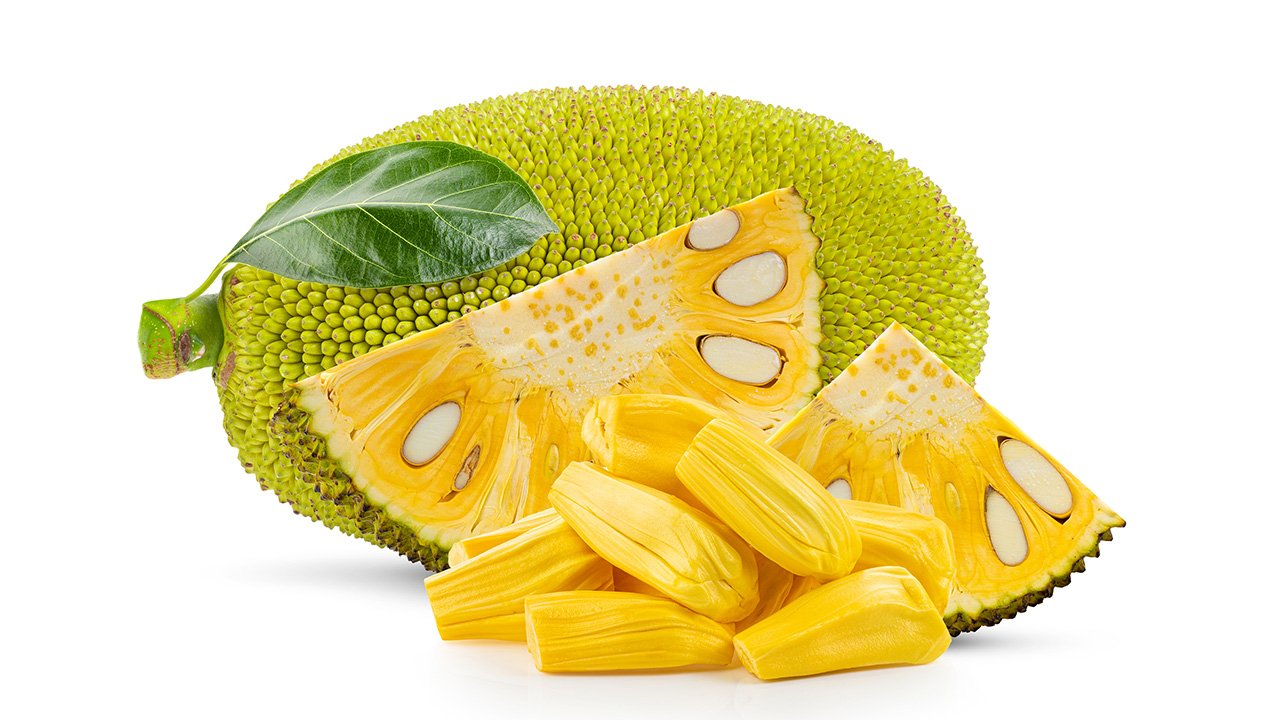
Pronunciation: /’ja-ck fru-it’/
Origins: Southeast Asia
Tastes Like: Sweet with subtle Pineapple and Banana flavor
Where to Buy: Special produce sections in markets; Can be found in the canned fruit section of groceries
Taste Score: 4/5
Jackfruits are versatile fruits. The unripe fruit is used in stews and other recipes as a vegetable. The ripe fruit can be eaten as is, canned, and even candied. The seeds are also made into candied fruit.
Jackfruits also have a strong aroma, significantly when they are fully matured. The meat itself is sweet and soft and kind of melts in your mouth. Jackfruit is made out of 75% water and is a good source of Vitamin C and Potassium.
In Asia, unripe jackfruits are often cooked as vegetables. Some recipes call for unripe jackfruits and black beans cooked together to make a hearty stew. Also, unripe jackfruits are also cooked in coconut milk and a bit of meat. These kinds of recipes are quick and easy to make but also hearty and can be filling.
8. Rambutan

Pronunciation: /ræmˈbuːtən/
Origins: Southeast Asia and thrives best in Malaysia and Indonesia
Tastes Like: A sweet grape, creamy flavor with a hint of floral
Where to Buy: In most local Asian and cultural stores
Taste Score: 4/5
These little golf-ball sized fruits look like a sea urchin with hairy spines, which is why it was named Rambutan from the Malay word. ‘Rambut’ translates to ‘hairy’ in Malay, so if you like your fruits ‘rambut’, this one is up your alley. Once you peel its soft skin, inside is a sweet treat just like lychee.
Rambutan has potassium, vitamin C, and other micronutrients. Its benefits lower cancer risk, improve health immunity, improves digestive health, lowers blood pressure, and much more.
9. Black Sapote

Pronunciation: /’bla-ck sa-po-te’/
Origins: Central America
Tastes Like: Chocolate pudding
Where to Buy: Special produce sections in markets or local growers online
Taste Score: 5/5
Black Sapote comes from a family of persimmons. When ripe, it has a yellow-green exterior and a black interior. It tastes like chocolate pudding, and even the texture is the same, but it is not related to the cocoa family. It is a strange fruit that has a surprise inside.
Aside from its strange appearance and taste, the Black Sapote is rich in Vitamin C and contains more than six times the daily amount of Vitamin C your body needs to stay healthy and fit for everyday agendas.
Black sapote is widely used as a substitute for chocolate and is used in desserts like brownies, cookies, cakes, and more. You can make your own version of your favorite chocolate dessert and use this instead of regular chocolate and sugar. You’ll have a more gooey and chewy dessert.
10. Dragon Fruit

Pronunciation: /’dra-gon fru-it’ /
Origins: Central America
Tastes Like: Lightly sweet
Where to Buy: Markets and grocery stores
Taste Score: 4/5
Dragon Fruits are native to Central America. This fruit has a vibrant pink skin with soft spikes. The plant itself is a cactus, and each cactus bear only one fruit. Inside the fruit, you’ll find white-colored meat with hundreds of tiny black seeds. Some varieties of Dragon fruits have pink meat instead.
The Dragon fruit has high levels of fiber and is naturally fat-free. It also contains prebiotics that is essential for the growth of good bacteria in our body. Moreover, it helps lower blood sugar levels and strengthens your immune system.
Dragon fruits are normally eaten as is, but some recipes call for it to be added to salads. It adds flavor and texture to salads, and with a mostly bland taste, it will not overpower the other ingredients mixed. It will perfectly balance any food or ingredient you pair it with.
11. Ugli Fruit

Pronunciation: /’ag-li’ /
Origins: Jamaica
Tastes Like: Sweet and tangy
Where to Buy: Special produce markets
Taste Score: 4/5
The Ugli fruit’s skin does not look pleasing; hence, the name. It resembles a lime but with brown tones, bumps, and bruises that do not look appealing. Even with a bruised and dented appearance, the Ugli fruit’s meat still tastes good and has a citrusy taste.
Ugli fruit contains high amounts of Vitamin C and antioxidants. Also, it is rich in flavonoids and has low calories, making it a perfect snack every day.
12. Hala Fruit

Pronunciation: /’ha-la’ /
Origins: Pacific Islands
Tastes Like: Sugarcane and mango combined
Where to Buy: Exclusive to Pacific Islanders
Taste Score: 4/5
The Hala fruit is a peculiar looking fruit that looks like an exploding meteor. It is made up of cones or segments that you can break into smaller pieces. The outside looks rough with a green tinge, but you can see reds and whites inside this fruit. In the middle of the fruit, you’ll find a giant seed.
This fruit has tons of benefits, including weight loss and weight management issues, heart problems, digestive health, and more. But this fruit is only exclusive to Pacific Islanders and regions beside it.
13. Buddha’s Hand

Pronunciation: /’ bu-da’s ha-nd’ /
Origins: India
Tastes Like: Sweet
Where to Buy: Southern California
Taste Score: 5/5
Buddha’s hand is a funny-looking fruit. This citrus fruit originated in India and was introduced to China afterward. It has fingers protruding from the base like an open hand reaching for something. It has a bright yellow color that is similar to a banana and white meat that tastes sweet.
Buddha’s hand is rich in Vitamin C that also acts as an antioxidant. This fruit has been part of ancient remedies, and up to this day, it still is being used. This fruit has anti-inflammatory properties as well as pain relief properties.
14. Monstera Deliciosa (Fruit Salad Plant)

Pronunciation: /’mon-stera de-li-ciosa’/
Origins: Southern Mexico and Southern Panama
Tastes Like: A mix of jackfruit and pineapple
Where to Buy: You can buy online from Miami growers
Taste Score: 5/5
We all know Monstera Deliciosa as an ornamental plant, but we don’t know that it bears fruit. Nowadays, you can find Monstera Deliciosa (Fruit Salad Plant) fruits online or from local growers. The fruit has a sweet and tangy taste, similar to a pineapple. It also has a bit of jackfruit taste that gives this fruit the perfect balance of sweetness.
The plant itself is excellent for purifying the air in your home, and it also has a beautiful design that makes it an ornamental plant. The fruit is rich in Vitamin C that boosts the immune system. Also, it has Vitamin B, calcium, and phosphorus.
15. Akebi

Pronunciation: /’a-ke-bi’ /
Origins: Japan
Tastes Like: Mildy sweet and bitter
Where to Buy: Special produce companies and markets during the early fall season
Taste Score: 3/5
Akebi is a fruit of a semi-evergreen vine. The fruit is purple and has a white interior with black seeds. But a young fruit starts as green and, when matured, turns violet. The flesh of the fruit has a crunch to it but melts in your mouth when consumed.
Akebi has the right amount of Vitamin C. It also has Zinc and Vitamin B, which are also crucial for your overall health. In Chinese medicine, the fruit and stem of Akebi are mainly used as a diuretic.
Although Akebi is considered a fruit, people have been preparing and cooking this as a vegetable. The most common way of cooking a akebi is by sautéing the meat and lightly seasoning it. You can eat this as a side dish or eat it as is. It will also add vibrant color to your plate and food, and serving this to guests will surprise them in the right way.
16. Nopales Buds
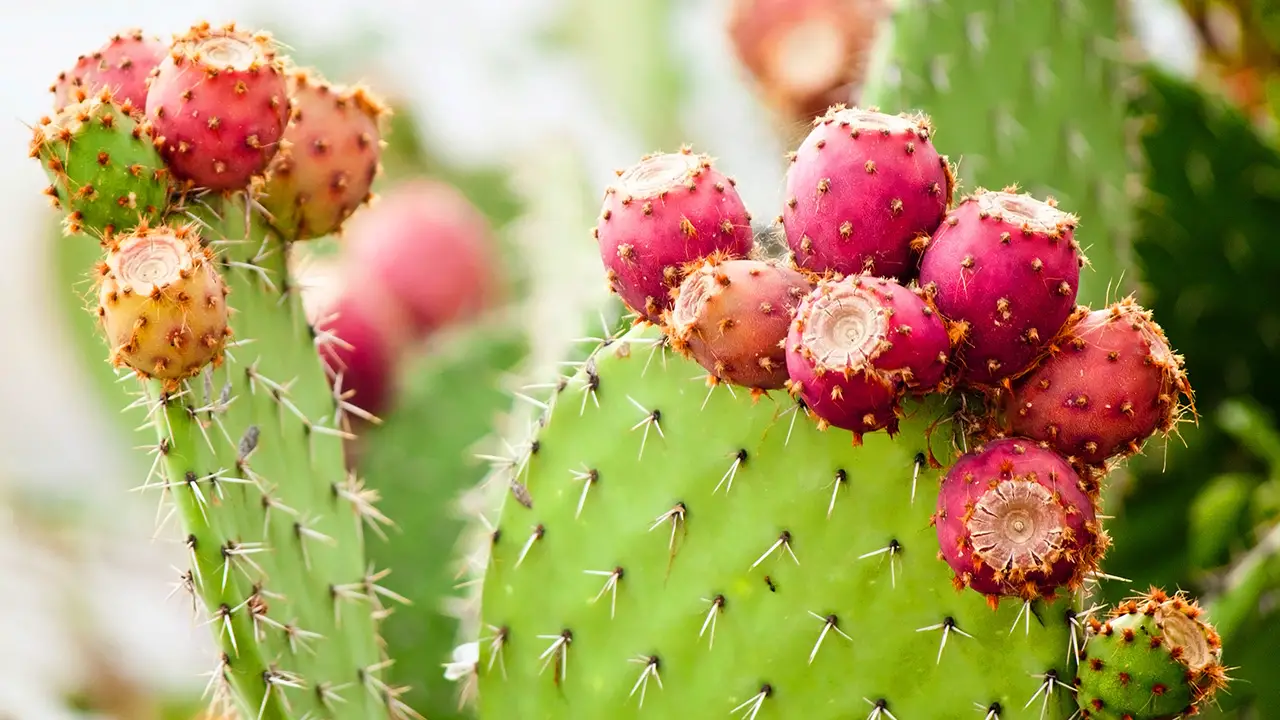
Pronunciation: /’no-pa-les’ /
Origins: Southwestern United States
Tastes Like: Tangy with hints of asparagus
Where to Buy: Produce stores and groceries during early spring to summer
Taste Score: 3/5
The Nopales buds are grown from the prickly cactus pear. The skin is color green with little bumps on the surface, and the bottom part fades into a bright red color. The flesh of the Nopales bud is crisp ad tender.
This bud has been used as a topical ointment that aids with sunburns. Native Americans also use this for gastrointestinal problems and colds. Moreover, the Nopales buds are packed with Vitamin A, B, C, and iron.
17. Dragon Carrots

Pronunciation: /’dra-gon ca-rot’ /
Origins: USA
Tastes Like: Sweet with a hint of spice
Where to Buy: Special produce companies and markets
Taste Score: 4/5
Dragon Carrots are peculiar-looking carrots that are scientifically cultivated by US scientists. This type of carrot has thicker yet shorter roots and have a reddish-purple skin fading into a yellow-orange core. It looks similar to the horns of a dragon, hence the name. This is perfect for savory dishes because it gives a little kick of spice that livens up a meal.
This sweet-spicy carrot is an excellent source of anthocyanin, which is an antioxidant and helps boost your immune system, and lycopene is anti-inflammatory. With its bright color, it will pop out from all the other ingredients on your plate. You can add this to your salads or as a side dish to your main course. You can even add this to soups and other dishes and it will not only look good but will taste good as well.
18. Cherimoya

Pronunciation: /’ cher-uh-MOY-uh’ /
Origins: Andean valleys of Peru, Ecuador, and Colombia
Tastes Like: Mild flavor of vanilla, mango, papaya, and banana mixed
Where to Buy: Special produce companies and markets during late fall through spring
Taste Score: 4/5
A Cherimoya fruit has an odd shape. Some say it is oblong, some say it looks more like a heart, others say its body like an egg. It has light green skin with small bumps. Inside, the flesh is white with brown-blacks seeds. The meat texture is somewhat creamy, and the taste is a mixture of sweetness and tartness.
Cherimoya contains 170 calories per 30 grams, so it best to eat this moderately to avoid high-calorie intake. But it has a high amount of Vitamin C and fiber. It also contains niacin, that will help your overall health.
19. Sapodilla

Pronunciation: /’sa-po-dil-la’ /
Origins: Southern Mexico and Yucatan
Tastes Like: Pear fruit
Where to Buy: Local farmers market or online markets during spring
Taste Score: 5/5
Sapodillas have an almond shape, and the skin of the fruit has fuzzy brown hairs. Inside, you’ll find an orange flesh that covers the seed, similar to a mango. It is soft to the touch and could easily break if not handled properly.
Sapodilla or Chikko has anti-inflammatory benefits. Also, it is packed with dietary fiber. In India, this fruit is used as anti-virus and anti-bacterial remedy.
20. Longan

Pronunciation: /’lon-gan’/
Origins: Asia
Tastes Like: Lychee
Where to Buy: Asian food markets and groceries
Taste Score: 5/5
Longan is a tropical fruit that resembles lychee. It has a similar taste with an opaque white color. Also, rather than a red exterior, its skin is a light brown shade. The shell has a hard and rough texture, but you can easily peel it off. Various Asian markets and international stores have these fresh or canned ready for use.
The longan fruit is known to have anecdotal properties. When eaten, it can help relieve symptoms of stress, fatigue, and depression. It is also a source of Vitamin C, and an ounce of Longan contains 44% of your daily Vitamin C needs.
21. Bamboo Shoots
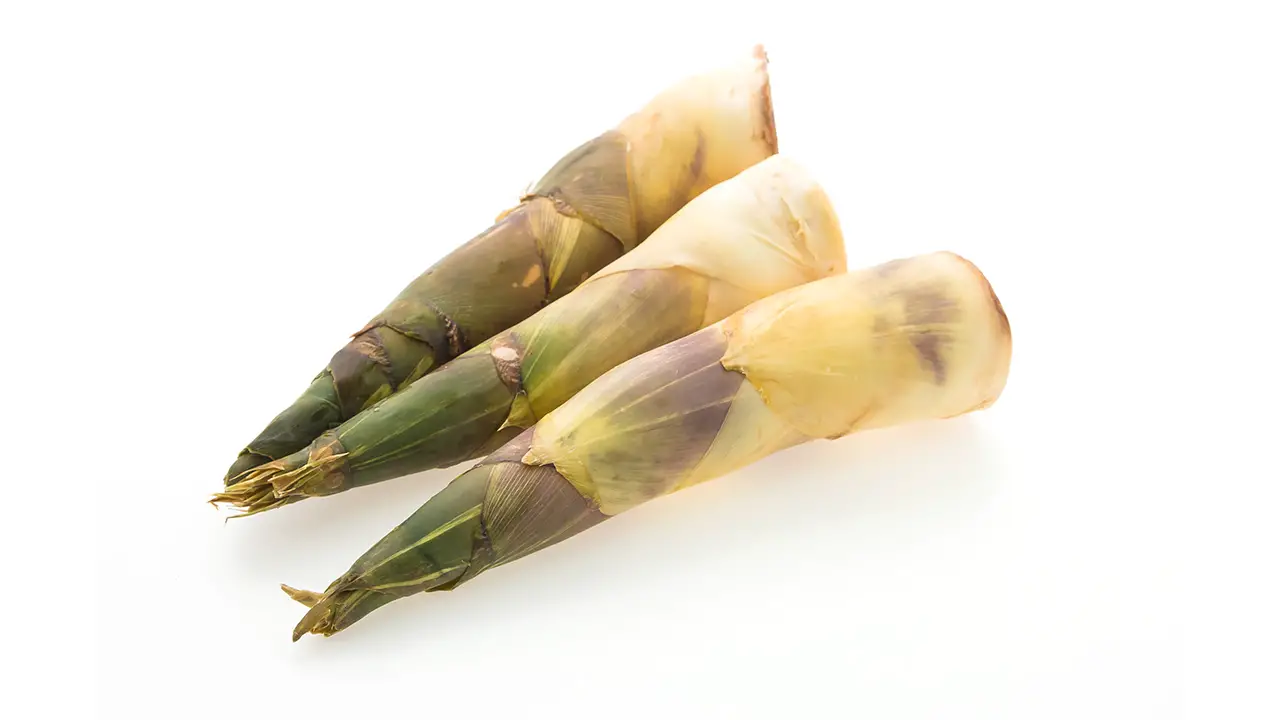
Pronunciation: /’bam-bu shoo-ts’ /
Origins: Asia
Tastes Like: Sweet like baby corn
Where to Buy: Produce section in grocery stores or local markets
Taste Score: 4/5
Bamboo shoots have been a part of Asian cuisine for centuries. When still raw, they have a bitter taste. You can find bamboo shoots almost anywhere because they have become an essential ingredient in Asian recipes.
Bamboo shoots are long and have a cone-like shape. They can grow up to 7 inches from the base, and it is best to harvest them before they reach two weeks old.
Bamboo shoots can be an excellent substitute for meat if you like. You can make stir fry bamboo shoots with sesame oil, nuts, and other vegetables you want to add. You can also make braised bamboo shoots that taste just like the original braised meat. You can play with the flavor and the way you cook the bamboo shoots to make your recipe out of it.
22. Baby Blue Jade Corn
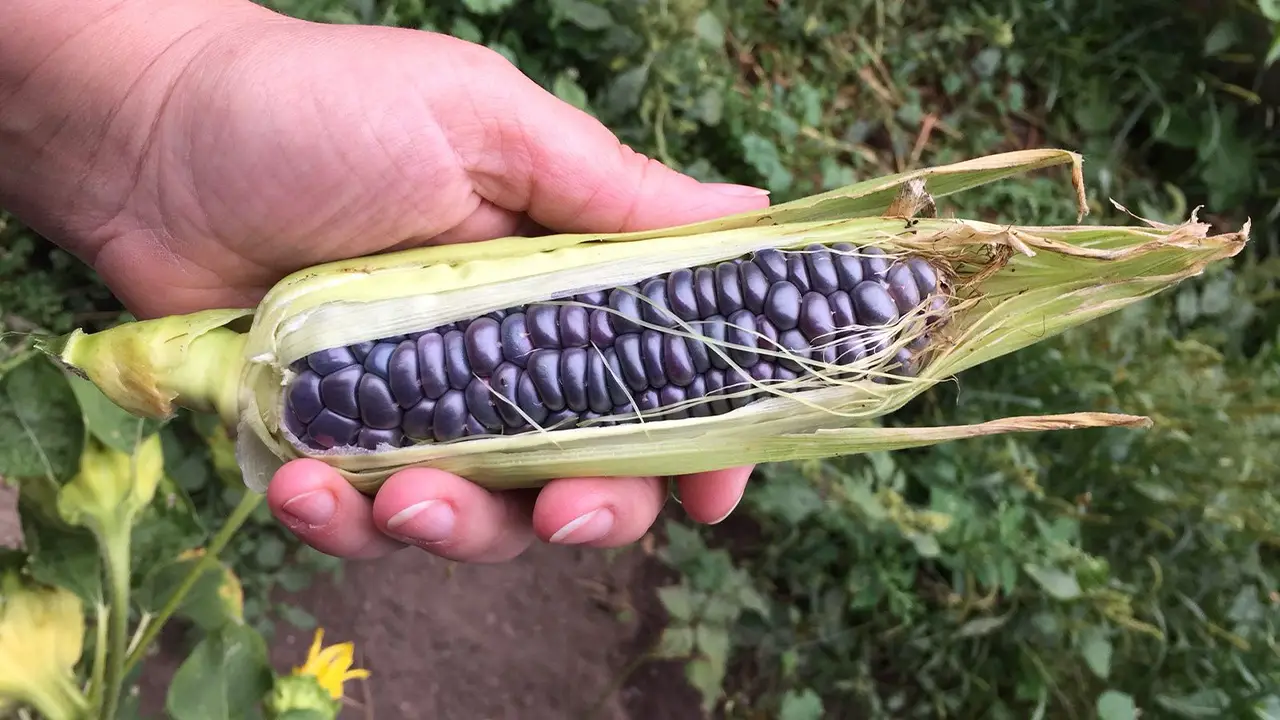
Pronunciation: /’jay-de cor-n’ /
Origins: Mexico
Tastes Like: Sweet
Where to Buy: local markets and online from growers
Taste Score: 5/5
The Baby Blue Jade Corn is a variety of corn that has blue, almost black kernels but still has the sweet corn taste. This unusual colored crop has become popular within the farming community and has since been cultivated and made into a dwarf crop.
Baby blue jade corps are sweet, just like the ordinary sweet corn. You can cook it by boiling it and adding tons of butter before eating. Also, you can roast it and add seasoning and spices too. You can play with the flavor and even add this to your salads and soup for the unusual pop of color.
23. Calabash
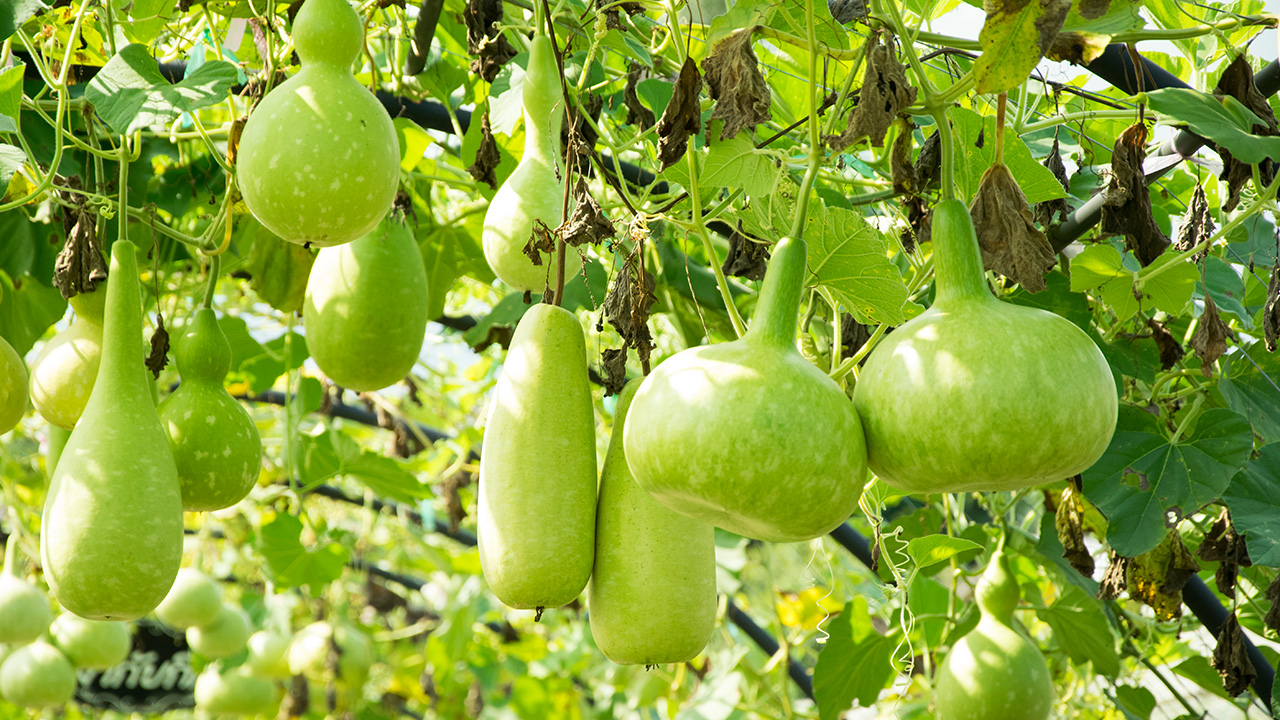
Pronunciation: /’ka-la-bash’ /
Origins: Southern Africa
Tastes Like: Coconut
Where to Buy: Local and online markets
Taste Score: 4/5
Calabash or often called ‘bottle gourd’ is shaped like a bottle. It has light green and smooth skin. Inside you’ll find white-colored flesh and brown seeds. Although it resembles a bottle-like squash, it has a taste similar to coconut meat.
The Calabash fruit is packed with vitamins and minerals like Vitamin B1, C, iron, potassium, and more. Also, it has properties that help fight respiratory problems such as asthma. Calabash can be roasted, cooked with coconut milk, and added to hearty stews. This will fill up your tummy and give you a boost of energy for the day.
24. Silk Squash

Pronunciation: /’ si-lk skwa-sh’ /
Origins: China
Tastes Like: Normal squash taste
Where to Buy: Local and online markets ad groceries
Taste Score: 4/5
The Silk squash or ‘angled luffa’ has dark green skin with ridges. It tastes like regular squash, although the flesh is white rather than yellow-orange. When it matures, the skin becomes rigid, and the meat becomes more fibrous and is used as a skin exfoliating device.
Besides its hygienic purpose, the Silk squash is also a good source of vitamin A and C. It also has dietary fiber, iron, and protein that is great for keeping your body healthy.
25. Kepel

Pronunciation: /’ke-pel’ /
Origins: Java and Indonesia
Tastes Like: Sweet
Where to Buy: Special produce markets
Taste Score: 4/5
Kepel fruits are brown with yellow-orange flesh with brown seeds in the middle. It is about the size on an adult fist. If unripe, the fruit is bitter to taste. But when ripe, it has a delicious sweet taste.
Kepel fruit is a natural deodorant and will help eliminate body odor. It also contains prebiotics and is used as a diuretic. It helps support the kidneys to fight off inflammation.
26. Lotus Root
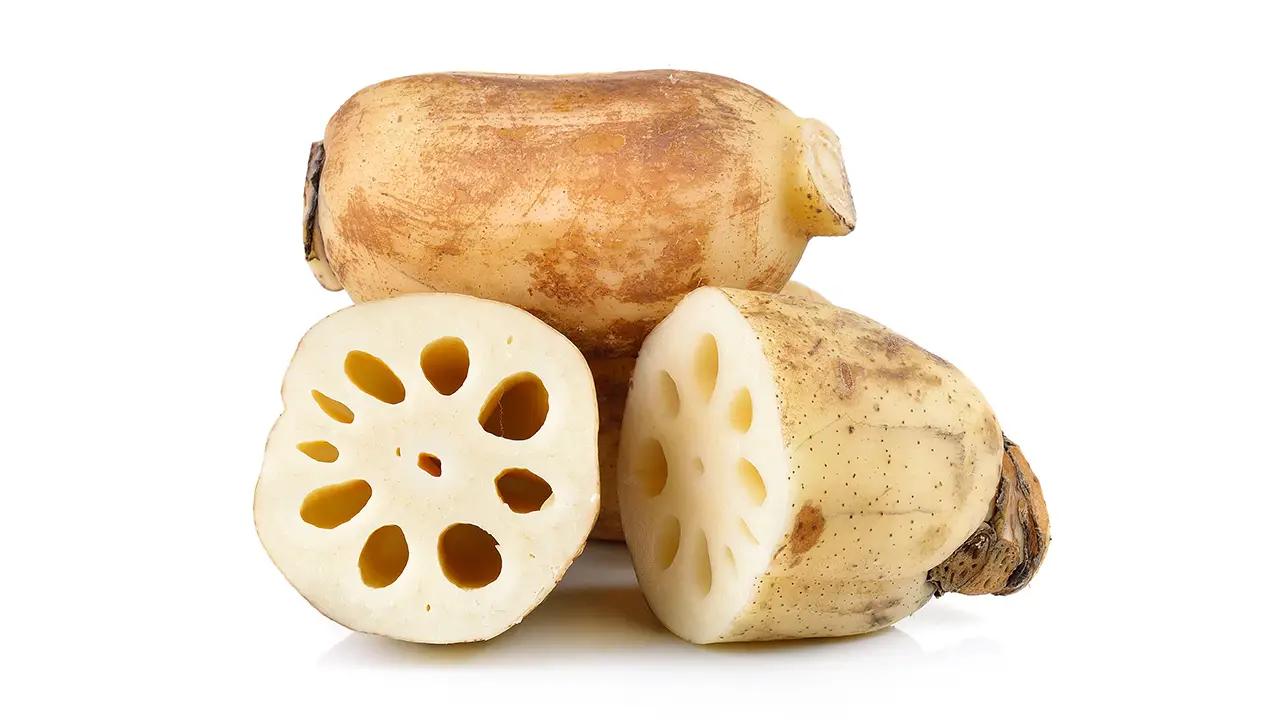
Pronunciation: /’lo-tus ru-ts’ /
Origins: Asia
Tastes Like: Nutty and sweet
Where to Buy: Asian markets and groceries
Taste Score: 5/5
Native in Asia, the Lotus root is long and tubular and grows underground. They look like sausages submerged in water. This plant has been used for centuries in Asian cuisine. To cook, let it boil until it is as soft as a boiled potato.
Lotus roots are high in fiber and can significantly help with digestion. Also, it is high in carbohydrates. It is also packed with vitamins B and C and essential minerals that boost your overall health. They are usually boiled until soft and added to stews and soups. Also, you can roast or sauté after blanching and add seasoning, so they become flavorful.
27. Cape Gooseberries
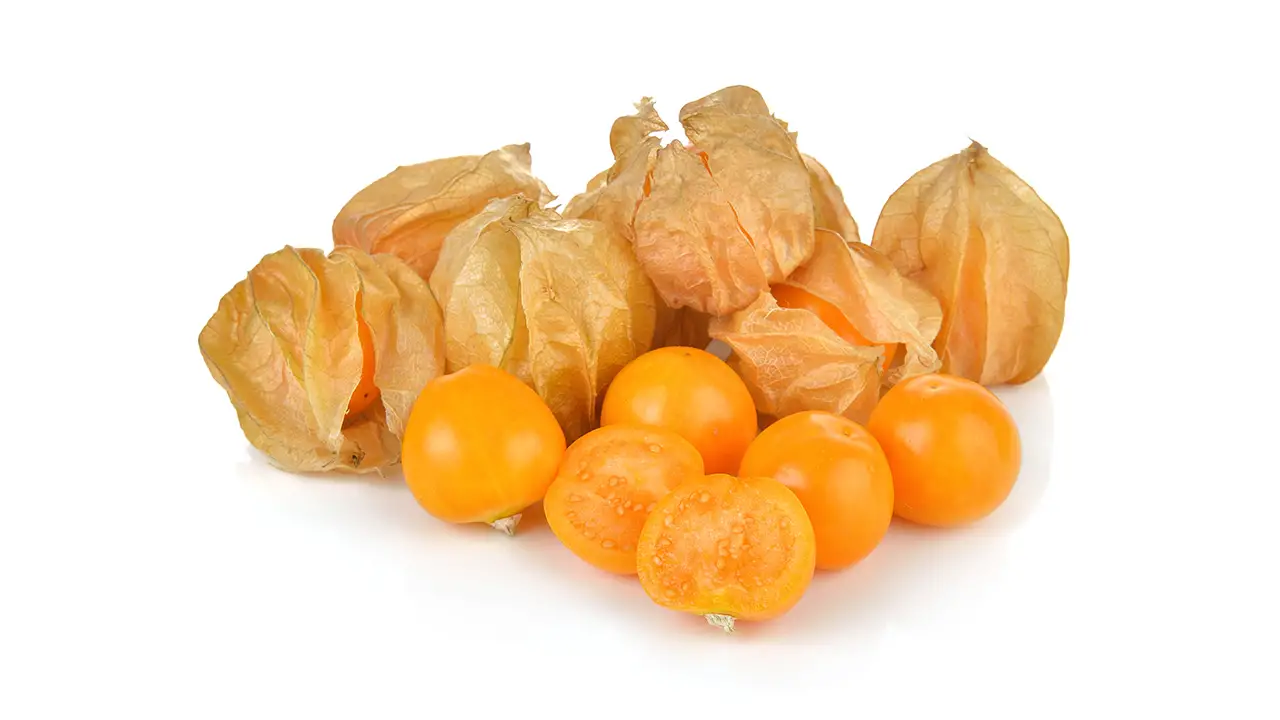
Pronunciation: /’ka-pe guz-ber-ries’ /
Origins: Brazil
Tastes Like: Sweet and tart
Where to Buy: Local markets and online growers
Taste Score: 3/5
Cape gooseberries are small, round fruits. They have a paper-thin husk that resembles a cape. Enclosed is a yellow-orange fruit that kind of resembles a tomato. The flesh is opaque yellow-orange with tiny seeds.
Cape gooseberries are sweet and tangy and have a lot of nutritional value. They are antioxidants that help boost your immune system and also helps in the production of collagen. It has been a natural remedy because of its anti-inflammatory properties.
28. Kumquats

Pronunciation: /’kum-kwats’ /
Origins: China
Tastes Like: Sweet and tangy
Where to Buy: Asian markets and groceries
Taste Score: 5/5
Kumquats are small, round, orange-colored fruit. Everything except the seeds is edible. The skin is where the sweet citrusy flavor lies, and the flesh is tart. It has been a part of Asian cuisine for centuries. Nowadays, this fruit is added to teas, and you can find them as ornamental plants.
29. African Fig
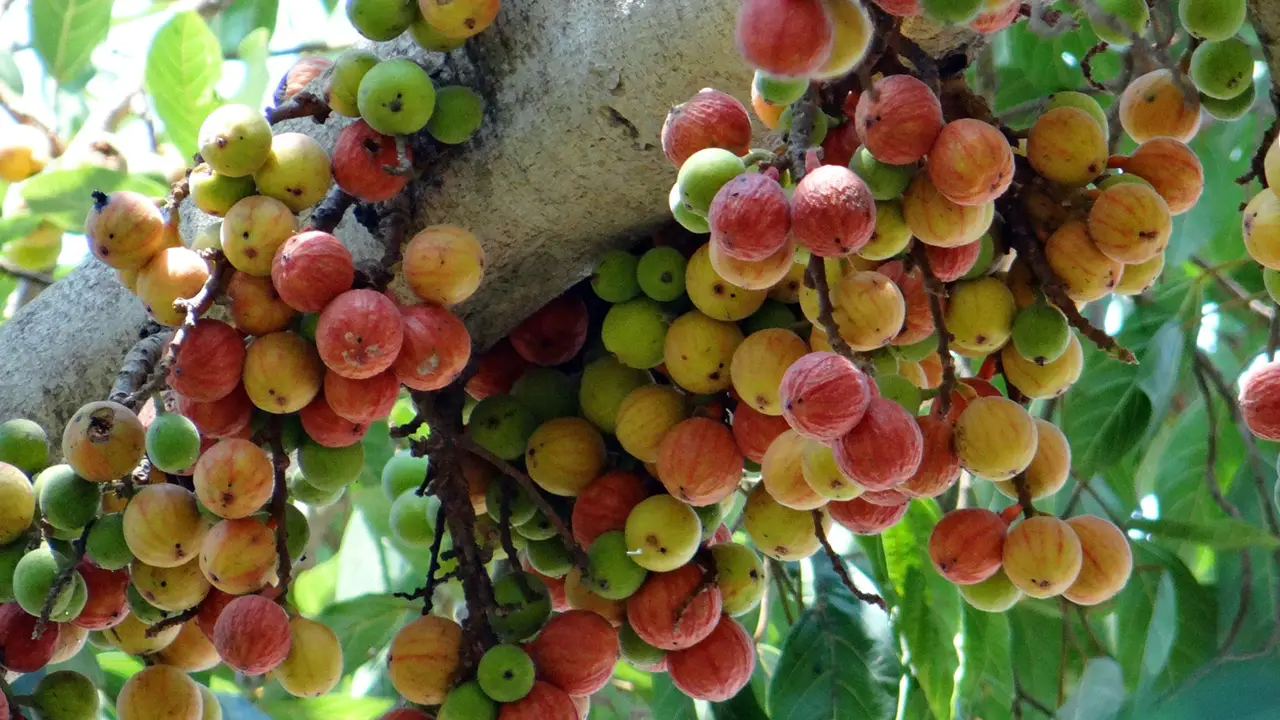
Pronunciation: /’af-ri-kan fi-g’ /
Origins: Southern Africa
Tastes Like: Mildly sweet
Where to Buy: International produce markets and groceries
Taste Score: 3/5
African fig fruits are edible from the kin to the meat itself. The skin, however, has a rough texture that can sometimes be undesirable. You can simply peel it off, but if you want to try, you can twist the stem and eat it raw.
African figs have minerals like potassium, magnesium, iron, and copper. It also has natural sugars that won’t affect your sugar levels. Lastly, it has Vitamin A and K that are great antioxidants.
30. Shiso
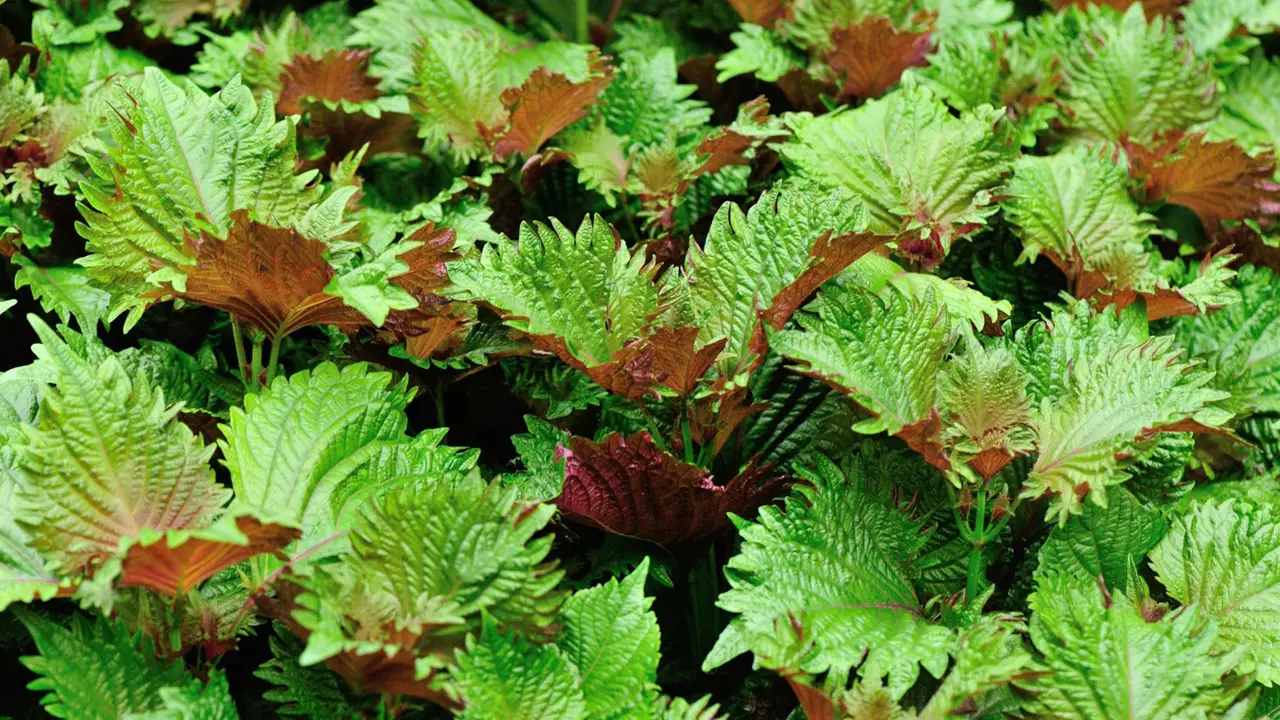
Pronunciation: /’ shee-so’ /
Origins: Japan
Tastes Like: Grassy with a tinge of anise
Where to Buy: Asian food markets and groceries
Taste Score: 4/5
Shiso or Red perilla is a Japanese herb. It has purple and green color leaves with serrated edges. This herb is from the mint family. This has been used in Japanese cuisine and also medication for centuries. It has vitamins and minerals that will give you a boost in your overall health.
31. Agajue

Pronunciation: /’a-ga-he’ /
Origins: South America
Tastes Like: Sweet and salty with a tinge of acidity
Where to Buy: South Africa or online
Taste Score: 3/5
Agajue is a fruit of a particular palm tree native to South America. It has brown and bumpy skin that almost looks like snakeskin. The flesh, however, is bright yellow. Its texture is creamy and oily and has an ample brown seed in the middle.
Agajue has antioxidants and anti-inflammatory properties. It also is a source of vitamin C that will help protect your immune system.
32. Kaffir Lime

Pronunciation: /’ka-feer li-me’ /
Origins: Myanmar and Thailand
Tastes Like: Tarty and bitter
Where to Buy: Asian markets and groceries
Taste Score: 2/5
Kaffir limes are different in every way compared to regular limes. The skin of kaffir limes is dark green. It is hard and wrinkled, too but is filled with essential oils. The flesh tastes bitter and tart, so the kaffir limes are not used in many dishes.
33. Annatto

Pronunciation: /’a-na-to’ /
Origins: Mexico and parts of Southern America
Tastes Like: Baylea and nutmeg combined
Where to Buy: Spices section of groceries and markets
Taste Score: 3/5
Annatto is a seed pod. Before it matures, it is covered with a white flower. Then, when it is fully matured, the pods open up to reveal the seeds. It has spikes for pods that look like stars, and it is used as a spice and a natural food coloring. It usually gives off a yellow to light orange color when mixed in oil or water.
34. Samphire

Pronunciation: /’sam-fire’ /
Origins: Southern Europe and Northern America
Tastes Like: Salty
Where to Buy: Local markets or online
Taste Score: 4/5
Samphires are seaweeds that have horn-like branches and scaly leaves. They are relatively small and grow in some coastal regions of Southern Europe and North America. Samphire is a popular ingredient among restaurants and chefs worldwide. They are high in protein and have Vitamin A, calcium, and iron.
Samphires are popular side dishes in coastal restaurants. You can eat the samphire raw to taste the flavor of the ocean, or you can blanch or sauté to cook it thoroughly before consuming.
35. Oca

Pronunciation: /’o-ka’ /
Origins: Andes Mountain
Tastes Like: Startchy, earthy taste
Where to Buy: Local markets and online retailers
Taste Score: 3/5
Oca is a tuber with a cylindrical and wrinkly shape. It has a variety of colors, from red to orange to yellow. It has the same texture as a potato and is cooked like a potato. This adds more color to your dishes, especially if you want to have a festive feeling through your food. Oca is rich in fiber, iron, and phosphorus. It is also a great source of vitamin C.
Prepare and cook Oca like you would with a potato. And with its vibrant colors, your dish will stand out. You can even try making fries and other potato dishes from Oca to know if they have an identical taste with potatoes.
36. Osage Orange

Pronunciation: / ‘OH-sayj ˈôrənj’ /
Origins: South-central or the mid-west United States
Tastes Like: Bitter flavor with mild notes of similar to watermelon rind
Where to Buy: Florida, south-central US, mid-west, or online
Taste Score: 1/5
The osage orange (Maclura pomifera), known as bowwood, edge apple, or horse apple, is a strange-looking fruit that resembles a brain. When cut, a sticky, milky sap comes out of it that can produce dermatitis in humans. The fruit’s meat is edible, but it doesn’t taste all that great and will probably make you sick. The seeds are edible, which taste somewhat of sunflower seeds.
37. Purple Potato

Pronunciation: /’pur-ple po-tay-toe’ /
Origins: Bolovia and Peru
Tastes Like: Starchy
Where to Buy: Local markets and groceries
Taste Score: 4/5
Purple potatoes add color to dishes. They are natural food dyes, or they have a deep purple color. They are prepared and cooked like regular potatoes, and they taste the same too. They are packed with potassium, Vitamin B6, and C. They are natural antioxidants that help boost the immune system.
You can do so much with purple potatoes. You can make purple mashed potatoes, purple hash browns, purple fries, and many more. It will look weird at first but is interesting for sure. All food fanatics out there would love to have a bite of this.
38. Romanesco Broccoli

Pronunciation: /’ro-ma-nes-ko bro-ko-li’ /
Origins: Italy
Tastes Like: Nutty
Where to Buy: Local produce markets and groceries
Taste Score: 4/5
Romanesco broccolis have a distinct look. It has a unique growth pattern that stands out from other varieties of broccoli. Although it is considered a type of broccoli, the Romanesco broccoli is closer to the cauliflower family.
This is a beautiful vegetable that will surely be a topic of conversation. The unique pattern of this will liven up any meal you prepare. You can simply blanch this, roast, or sauté for a bit. Serve this with steak, chops, or any meat and other vegetables, and you’ll have a splendid meal.
39. Squirting Cucumber

Pronunciation: / skwərt-ing ˈkyo͞oˌkəmbər /
Origins: Mediterranean region, Southwest Asia, and Southern Europe
Tastes Like: Bitter
Where to Buy: Online
Taste Score: 1/5
Also known as the spitting cucumber or the exploding cucumber, the squirting cucumber is one alien-looking plant. It’s exterior has long prickly spines and have a distinctive look. When this plant is ripe, the pod will explode squirting seeds at a distance of 10 feet or more.
WARNING: This cucumber has high levels of cucurbitacins, which may cause stomach cramps, vomiting, diarrhea, and may be fatal.
40. Fiddleheads

Pronunciation: /’fid-dle he-ds’ /
Origins: North America
Tastes Like: Earthy
Where to Buy: Local markets or online
Taste Score: 3/5
Fiddleheads are young shoots of ferns that have not fully matured yet. They are greenish with a tint of maroon ad they are folded into a swirl. They may look like earthworms. They are crunchy and develop a flavor similar to an artichoke when cooked.
They are rich in antioxidants and bioflavonoids and vitamins and minerals that help you maintain a healthy body and immune system. You can make a salad out of fiddleheads and add simple vinaigrette nuts and berries. You’ll have a flavorful meal that s also healthy.
41. Black Radish

Pronunciation: /’bl-ak ra-dish’ /
Origins: Eastern Mediterranean
Tastes Like: Radish
Where to Buy: Special produce markets and online retailers
Taste Score: 3/5
The Black Radish has a black or brown skin that has a strong flavor that not everyone likes. Inside, the flesh is just like an ordinary radish, and it also tastes the same. If not a fan of the intense flavor, peel off the skin before cooking.
Black radishes have Vitamins A, B, C, and E. It is also a good source of potassium, iron, and magnesium. Adding this to your salads or vegetable dish will elevate your meal. Not only in color, but it will also have more texture and flavor. If you are down to explore new things, this is an excellent start for you.
42. Dulse

Pronunciation: /’dul-seh’ /
Origins: Northern coasts of Pacific and Atlantic Oceans
Tastes Like: Salty
Where to Buy: Special produce market or online retailers
Taste Score: 4/5
Dulse is a type of seaweed that has a deep red or maroon color. The color comes from red algae present in the waters of the northern coasts of the Pacific and Atlantic oceans. It resembles lettuce because it is thin and leafy. It is a good source of protein and fiber. It is also packed with vitamins and minerals that keep your body healthy.
You can add dulse leaves to salads, so your dish has an attractive color combination and flavor. You can also have this as a side dish to your favorite meals because it is flavorful on its own. You can blanch this and eat it as is, and you’ll still find this seaweed delicious.
43. Cucamelon

Pronunciation: /’ku-ka me-lon’ /
Origins: Central America and Mexico
Tastes Like: Tart and tangy
Where to Buy: Special produce markets only during summer to fall
Taste Score: 5/5
Cucamelons are a cross between a cucumber and watermelon. They are relatively small in size, about the size of a quarter. The skin resembles that of watermelon, but the insides are more of a cucumber. They have reasonable amounts of Vitamin A and C.
You can make pickles out of cucamelons, and they’ll taste divine. You can add the pickled cucamelons to any dish you want, and it will go perfectly okay because it will not have an overpowering flavor. If you do not like pickled cucamelons, you can simply slice them and mix them with other fruits, vegetables, and nuts and make yourself your very own salad recipe.
44. Red Yard Long Beans
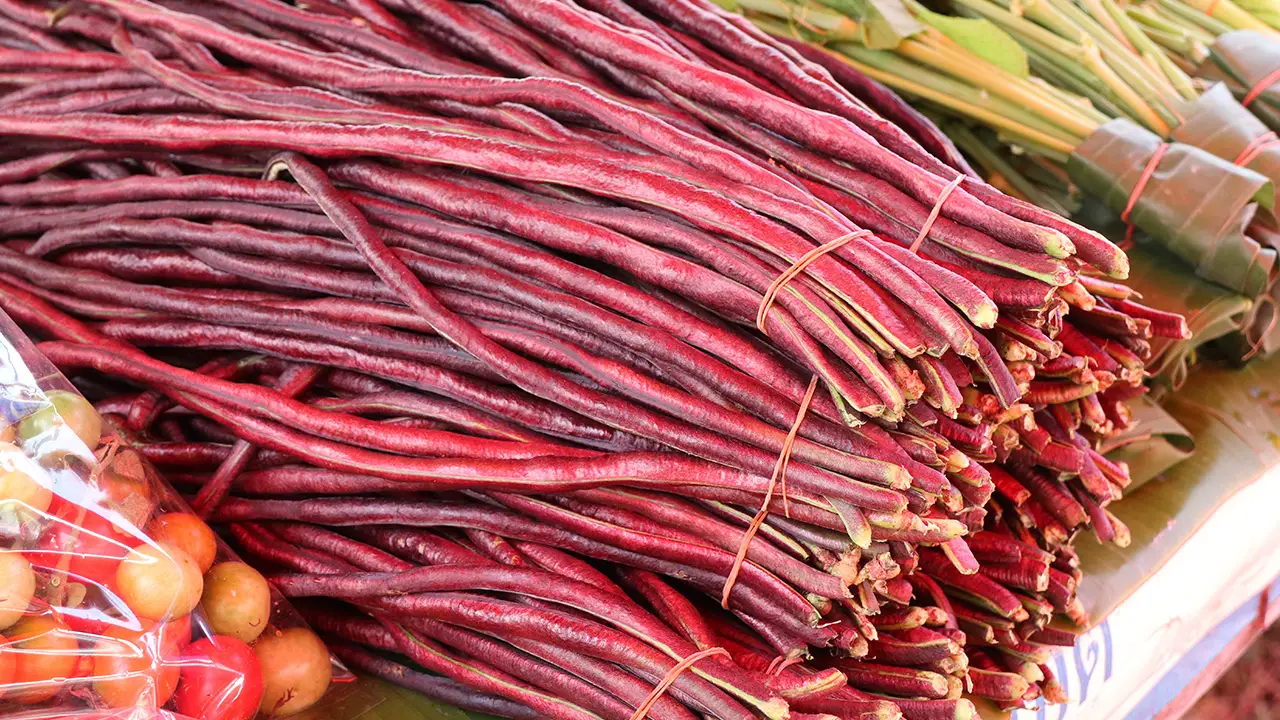
Pronunciation: /’ re-d ya-rd lo-ng bee-ns’ /
Origins: Southern Asia
Tastes Like: Asparagus
Where to Buy: Special produce markets
Taste Score: 4/5
Red yarn long beans grow from vines. They look like red noodles dangling from the vines and have an asparagus taste rather than bean taste. They are packed with vitamins A and C and minerals like folate and phosphorus.
Red yarn long beans are a perfect addition to soups and stews. You can even blanch this and add it to your salad. Since it has a similar taste to asparagus, you can substitute it and have a more exciting dish to serve. It would be a conversation starter, and you won’t have to worry because it’s healthy and delicious at the same time.
45. Duku Fruit

Pronunciation: /’du-ku’ /
Origins: Southeast Asia
Tastes Like: Sweet and tarty
Where to Buy: Asian markets and groceries
Taste Score: 5/5
Duku fruits are small round yellowish-brown fruits that grow in clusters. The rind is covered in fuzzy hairs, and underneath the skin, an opaque white flesh surrounds the seeds. They have 1-5 clusters inside. This fruit has tremendous amounts of vitamin A, B, C, and E.
46. Goji Berry

Pronunciation: /’go-gee be-ry’ /
Origins: China
Tastes Like: Sour
Where to Buy: Asian markets and groceries
Taste Score: 4/5
Goji berries have been a part of Chinese medicine for centuries. The inside of this fruit has bright red pulps. It is added to teas or eaten raw or dried. It has a lot of benefits that help in maintaining healthy eyes, immune system, and skin. It is also said that it has positive effects on your mental well-being as well.
Goji berries are sold as fresh fruit or even dried. You can add the fruit to salads, smoothies, and even tea. This way, you have a nice pop of color, texture, and flavor to any dish you prepare. And with a lot of benefits from this fruit, you are letting your body absorb all its nutrients too.
47. Jaboticaba
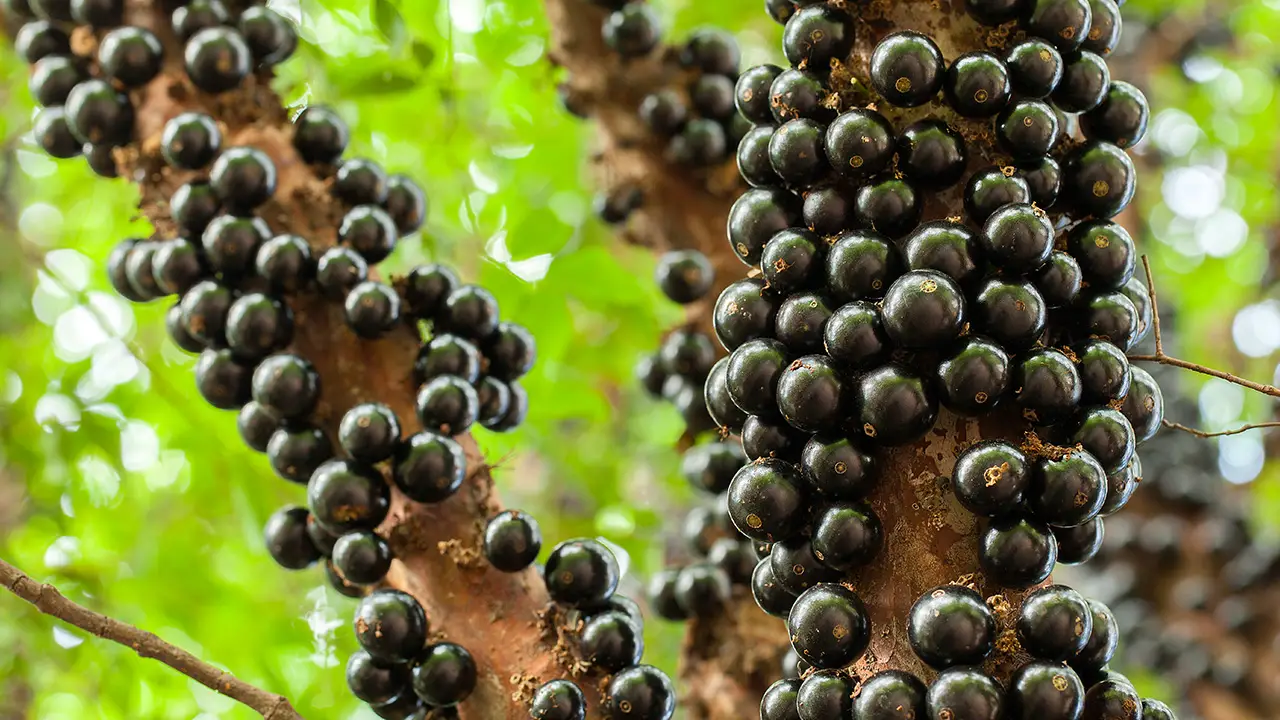
Pronunciation: /’ha-bo-tee-ka-ba’ /
Origins: Brazil
Tastes Like: Grapes
Where to Buy: Online retailers
Taste Score: 5/5
The fruit has a similar appearance and taste to a grape though slightly bigger. This fruit is also made into wines and jellies. It has a potent antioxidant and is believed to prevent diabetes, obesity, and treat chronic obstructive pulmonary diseases.
48. Pineberry
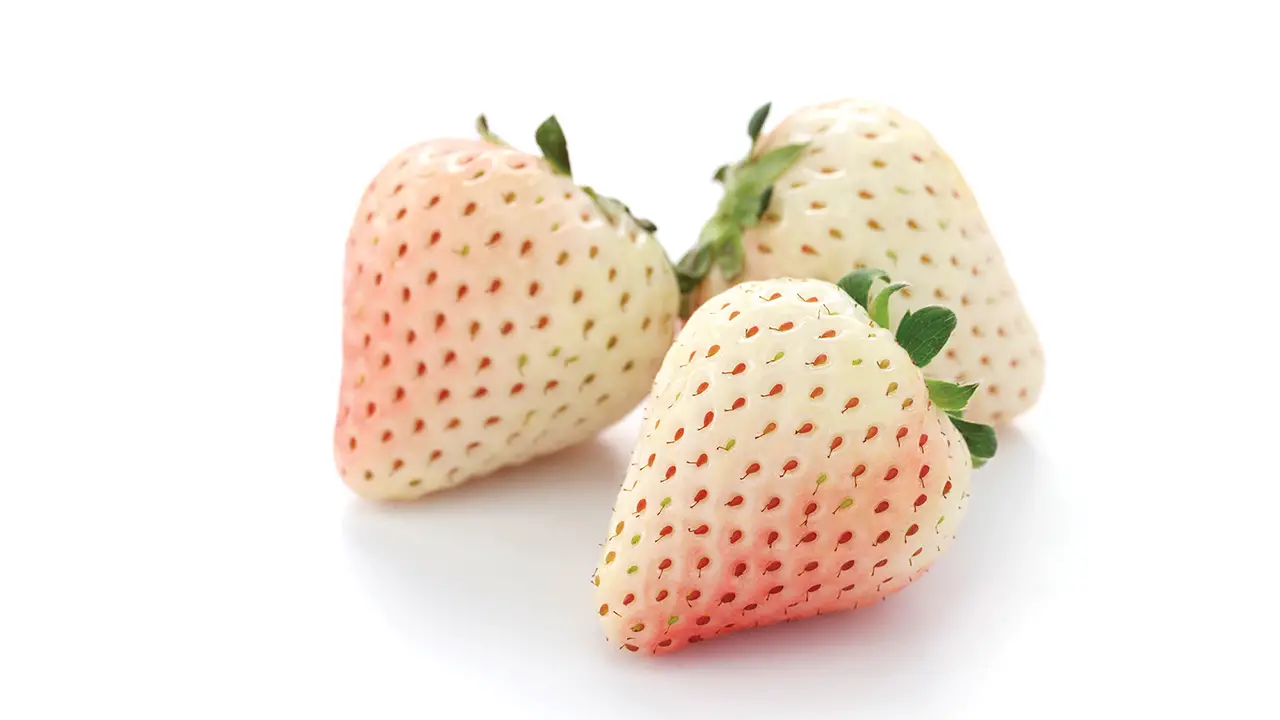
Pronunciation: /’pay-n be-ree’ /
Origins: South America
Tastes Like: Pineapple
Where to Buy: Online retailers
Taste Score: 5/5
Pineberries are similar to strawberries. They are smaller in comparison and have white skin, sometimes with pink patches. The seeds are red, and it almost looks like an inverted strawberry. It is tart and citrusy like a pineapple. Pineberries are a great source of Vitamin A and C and also folate.
49. Apollo Broccoli
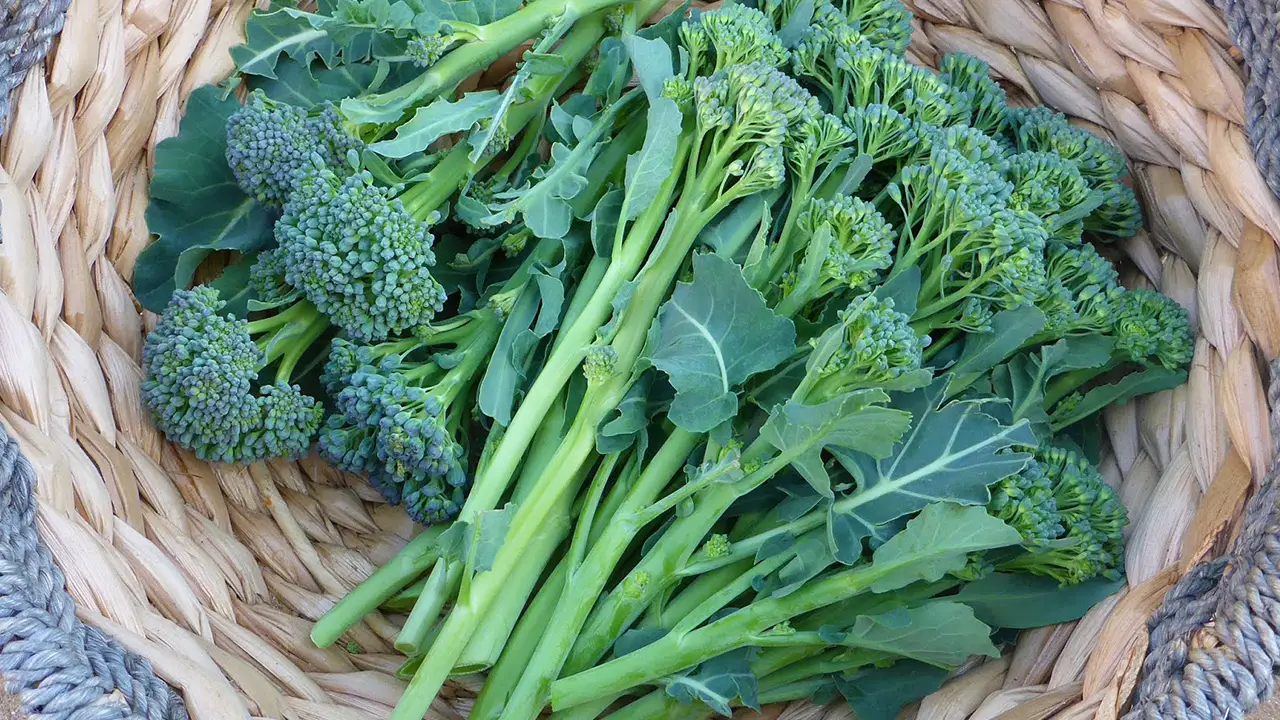
Pronunciation: /’a-poh-lo bro-ko-lee’ /
Origins: Brazil
Tastes Like: Italy
Where to Buy: Online retailers and groceries
Taste Score: 5/5
Though Apollo broccolis is a part of the cabbage family, they resemble lettuce or Chinese kale. They have long stalks with flat leaves with deep green color. They are used in salads or blanched to cook. Apollo Broccolis is rich in Vitamin B complex, C and K, which boost and protect your immune system.
You can prepare this by simply blanching it or sautéing it and adding salt and paper. This broccoli is a great side dish for any meal. Also, you can add this to your pasta dish. You could prepare penne pasta with any cheese and meat and Apollo broccoli to add color and texture to your plate.
50. Korean Melon

Pronunciation: /’ko-ree-yan me-lon’ /
Origins: Korea
Tastes Like: Sweet
Where to Buy: Korean/Asian markets and grocery stores
Taste Score: 5/5
Korean melons are bright yellow-orange melons with deep white stripes. The flesh inside of the fruit is white, accompanied by white seeds. This type of melon has been cultivated in Korea and has become popular in the country. Since the popularity of Korea worldwide, this fruit is also in demand outside of Korea. Korean melons are rich in vitamins and minerals that act as antioxidants and protectants against illnesses and diseases.
Do Your Research
These strange fruits and vegetables are becoming more and more popular these days. With many foodies and bloggers willing to try out these peculiar food items, the demand for this is multiplying. Although it is healthy to eat fruits and vegetables as they are natural products, it’s best to learn about them before consumption.
With higher demands, it can become a problem in the farming industry. Also, not all of these can grow anywhere you plant them. Some of these fruits and vegetables have specific requirements in terms of weather, soil, humidity, and more.
Some of these plants have adapted to different environments because they have been studied and cultivated correctly. If you plan to grow your strange plants, it is better to ask for expert help. Do your research and know everything there is to know about a particular crop or plant.
What Do You Think?
After taking a look at this list of the strangest fruits and vegetables around the world, what do you think of them? Which of these do you find particularly strange or weird? Have you ever tasted any of these or do you grow any of these yourselves? Please comment below and get the conversation going!
